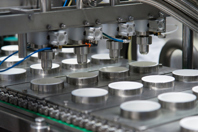RESOURCES FOR THE FOOD & BEVERAGE INDUSTRY
-
Learn how a beverage plant cut its annual Reverse Osmosis reject water hauling volume by 50%. Real-time Total Nitrogen monitoring reduced compliance costs by $350,000 and eliminated discharge penalty risk.
-
At Galbani, one of Italy’s premier dairy producers known for its fresh mozzarella, controlling microbial contamination is essential to preserving product quality and shelf life. Pseudomonas spp., notorious for thriving in moist environments and resisting chlorine, posed a persistent threat across their production lines in Corteolona and Casale Cremasco.
-
In the heart of Israel’s Jezreel Valley, Ba’emek Advanced Technologies—part of the Tnuva Group—faced a critical challenge: how to sustainably reuse water extracted from whey during dairy processing without compromising safety or quality.
-
Despite meeting European drinking water standards, contamination levels at a brewery reached as high as 800 CFU/ml, prompting the brewery to seek a reliable disinfection solution to protect the integrity of its production processes.
-
Food production not only uses a lot of water in their products, but they also deal with unique wastewater challenges. These challenges are compounded by the varying nature of contaminants present in food & beverage wastewater. Treatment facilities must be designed to handle fluctuating volumes and compositions of wastewater, while maintaining consistent performance.
-
Learn how High Desert Milk, a cooperative in Idaho, optimized their water treatment process using HOD™ UV technology, ensuring FDA compliance while significantly reducing water and energy consumption.
-
In this article, read about the emergence of business sustainability and sustainably-driven innovation as a force for change within wastewater treatment and the associated compliance functions of the food and beverage industry.
-
Learn how Simmons Foods resolved their wastewater treatment issues by replacing their aeration equipment, resulting in increased treatment capacity, improved removal rates, and reduced operating costs and energy consumption.
-
Learn how Seaboard Triumph Foods replaced ineffective hydrogen peroxide treatment with SDOX technology, resulting in cost savings, improved sewer system, and enhanced odor control.
-
Harboes Bryggeri A/S was facing challenges with the performance of its wastewater treatment plant, due to the highly variable Chemical Oxygen Demand (COD) load in the inlet.











